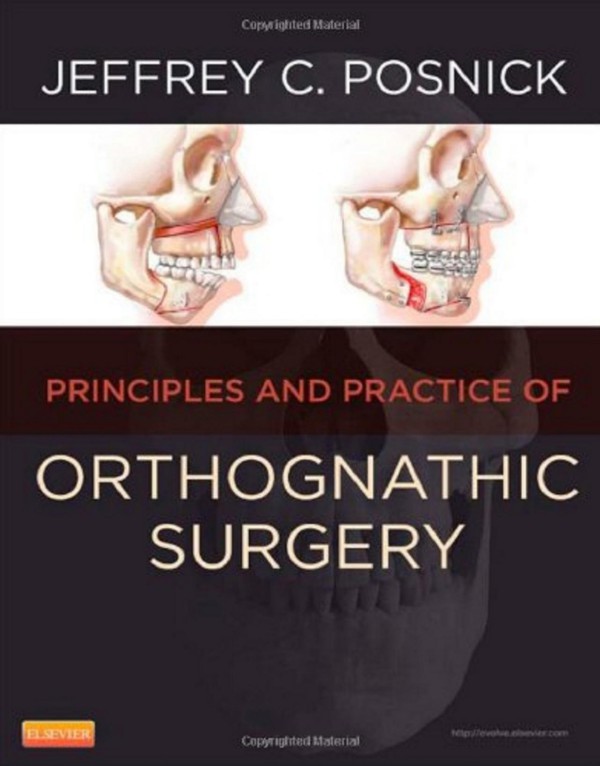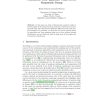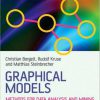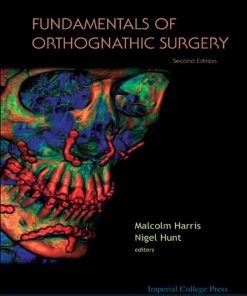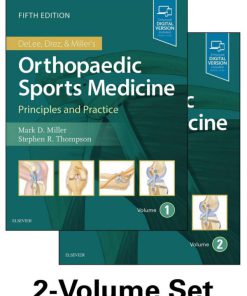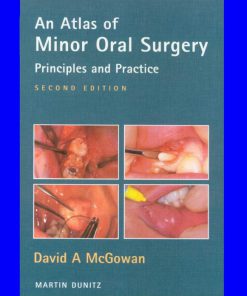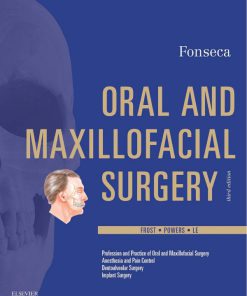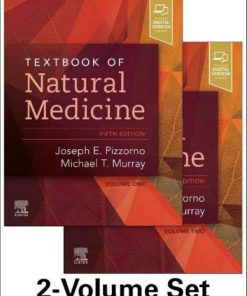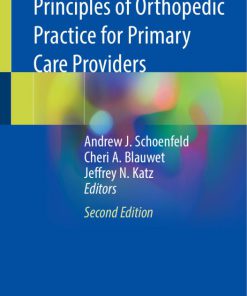Orthognathic Surgery 2 Volume Set Principles and Practice 2nd Edition by Jeffrey Posnick ISBN 0323791824 9780323791823
$50.00 Original price was: $50.00.$25.00Current price is: $25.00.
Authors:Jeffrey C. Posnick , Series:Dentistry [349] , Tags:Medical; Dentistry; Oral Surgery; Surgery; Cosmetic & Reconstructive , Author sort:Posnick, Jeffrey C. , Ids:9780323791823 , Languages:Languages:eng , Published:Published:May 2022 , Publisher:Elsevier Health Sciences , Comments:Comments:Find the latest thinking on the evaluation and treatment of dentofacial deformities! Principles and Practice of Orthognathic Surgery, 2nd Edition covers the concepts and skills required to diagnose and correct dentofacial deformities. Featuring thousands of images, this guide addresses planning, surgical techniques, surgical complications, classic growth patterns, and presentations of dentofacial deformity including common malformations, cleft jaw, and post-traumatic deformities, as well as aesthetic considerations. Case studies and step-by-step videos help you apply concepts and achieve real-life solutions. Written by Jeffrey C. Posnick, a noted expert in facial plastic surgery, this valuable reference will take your orthognathic skills to the next level. An enhanced eBook version included with every new print purchase provides access to a complete, fully searchable version of the text, along with videos of procedures, and much more – available on a variety of devices. More than 3,500 photos and illustrations boost your understanding of key points and surgical techniques. Logically organized material aids your thinking prior to developing treatment plans and executing surgery. Current surgical protocols for Oral and Maxillofacial Surgeons and Orthodontics put you at the forefront of the orthognathic surgery field. NEW! In-depth content revision and clear artwork are added to this edition. NEW! Virtual Surgical Planning chapter examines how VSP provides a useful tool for planning surgeries prior to entering the operating room. NEW! 45 videos depict step-by-step approaches to essential orthognathic procedures and techniques. NEW! Enhanced eBook version included with every new print purchase provides access to a complete, fully searchable version of the text, along with videos of procedures and much more! NEW! More case studies are included, each demonstrating long-term results. NEW! Up-to-date review and analysis of research literature is added.
Orthognathic Surgery 2 Volume Set Principles and Practice 2nd Edition by Jeffrey C. Posnick – Ebook PDF Instant Download/Delivery. 0323791824, 978-0323791823
Full download Orthognathic Surgery 2 Volume Set Principles and Practice 2nd Edition after payment
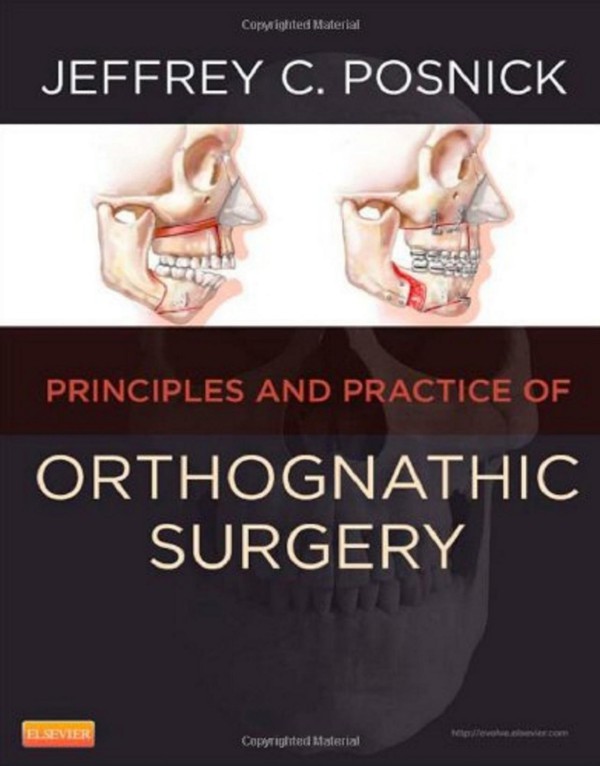
Product details:
ISBN 10: 0323791824
ISBN 13: 978-0323791823
Author: Jeffrey C. Posnick
**Selected for Doody’s Core Titles® 2024 in Oral & Maxillofacial Surgery** Find the latest thinking on the evaluation and treatment of dentofacial deformities! Principles and Practice of Orthognathic Surgery, 2nd Edition covers the concepts and skills required to diagnose and correct dentofacial deformities. Featuring thousands of images, this guide addresses planning, surgical techniques, surgical complications, classic growth patterns, and presentations of dentofacial deformity including common malformations, cleft jaw, and post-traumatic deformities, as well as aesthetic considerations. Case studies and step-by-step videos help you apply concepts and achieve real-life solutions. Written by Jeffrey C. Posnick, a noted expert in facial plastic surgery, this valuable reference will take your orthognathic skills to the next level. An enhanced eBook version included with every new print purchase provides access to a complete, fully searchable version of the text, along with videos of procedures, and much more ― available on a variety of devices.
- More than 8,000 photos and illustrations boost your understanding of key points and surgical techniques.
- Logically organized material aids your thinking prior to developing treatment plans and executing surgery.
- Current surgical protocols for Oral and Maxillofacial Surgeons and Orthodontics put you at the forefront of the orthognathic surgery field.
- NEW! In-depth content revision and clear artwork are added to this edition.
- NEW! Virtual Surgical Planning chapter examines how VSP provides a useful tool for planning surgeries prior to entering the operating room.
- NEW! 45 videos depict step-by-step approaches to essential orthognathic procedures and techniques.
- NEW! Enhanced eBook version included with every new print purchase provides access to a complete, fully searchable version of the text, along with videos of procedures and much more!
- NEW! More case studies are included, each demonstrating long-term results.
- NEW! Up-to-date review and analysis of research literature is added.
Orthognathic Surgery 2 Volume Set Principles and Practice 2nd Table of contents:
Section 1: Basic Principles and Concepts
-
Perspectives on the Face
- What Constitutes a Face?
- Facial Perspectives and Stages in the Life Cycle
- Evolutionary Considerations
- Craniofacial Growth and Development
- Dysmorphic Faces
- The Outer Limits in Facial Reconstructive Surgery
- Making Blind People See Again
- Prosopagnosia
- The New Psychiatric Genetics
- Artistic Perspective of the Face
-
Pioneers and Milestones in the Field of Orthodontics and Orthognathic Surgery
- A Few Thoughts to the Young Surgeon
- Pioneers in the Field of Orthodontics
- Early Pioneers in the Field of Orthognathic Surgery
- Hugo L. Obwegeser: Development of the Standard Orthognathic Procedures
- William H. Bell: Experimental Studies to Confirm the Biologic Basis of the Standard Orthognathic Procedures
- Hans G. Luhr: Development of Plate and Screw Fixation for Craniomaxillofacial Surgery
- Paul Louis Tessier: Development of Craniofacial Surgery
- Conclusions
-
Prevalence of Dentofacial Deformities, a Biologic Classification System, and Frequency of Orthognathic Surgery
- Prevalence of Developmental Dentofacial Deformities with Malocclusion
- Common Patterns of Developmental Dentofacial Deformities: A Biologic Classification System
- Frequency of Orthognathic Surgery for the Correction of Dentofacial Deformities in the United States
- Practice Patterns for the Correction of Dentofacial Deformities in the United States: the First Quarter of the 21st Century
- Conclusions
-
Hereditary, Developmental, and Environmental Influences in the Formation of Dentofacial Deformities
- Embryologic Development of the Head and Neck
- Evolution of the Human Craniofacial Skeleton and Implications for Treatment of Dentofacial Deformities
- Syndromes and Anomalies with Dentofacial Deformities
- Developmental Dentofacial Deformities with Hereditary Tendencies
- Environmental and Neuromotor Effects on Skeletal Growth
- Effects of Trauma on Skeletal Growth
- Effects of Tumors/Growths on Skeletal Growth
- Conclusions
-
Orthodontic Considerations in the Evaluation and Treatment of Dentofacial Deformities
- Orthodontic Treatment Philosophy
- The Biologic Basis for Orthodontic Tooth Movement
- Periodontal Ligament Structure and Function
- Response of the Teeth and Periodontium to Normal Occlusal Function
- Orthodontic Tooth Movement
- Negative Sequelae of Orthodontic Forces
- Mechanical Techniques Used in Orthodontic Force Control
- Fixed Appliances Used in Orthodontic Treatment
- Removable Appliances Used in Orthodontic Treatment
- Regional Accelerated Phenomenon (RAP) in Orthodontics
- Temporary Skeletal Anchorage in Orthodontics
- Use of Self-Ligating Appliances for the Purpose of Dental Arch Expansion
- Sequencing of Orthodontics in Conjunction with Orthognathic Surgery
- Guiding Orthodontic Principles in the Comprehensive Correction of Dentofacial Deformities
- Orthodontic Trends in the Treatment of Dentofacial Deformities
- Conclusions
-
Periodontal Considerations in the Evaluation and Treatment of Dentofacial Deformities
- Teeth
- The Tissues of the Periodontium
- Current Classification for Periodontal Disease and Associated Conditions
- The Etiology of Periodontal Disease
- Assessing the Individual’s Biologic-Anatomic Risk Factors (“Phenotype”)
- Effects of Orthodontic “Camouflage” Maneuvers on Periodontal Health
- Periodontal Therapeutics
- Aging and the Periodontium
- Adult Orthodontic Treatment
- Conclusions
-
Psychosocial Considerations in the Evaluation and Treatment of Dentofacial Deformities
- Psychosocial Aspects to Consider Before Surgery
- Body Dysmorphic Disorder
- Psychological Functioning in the Individual with a Facial Deformity
- Patient and Family Decision for or Against the Correction of a Dentofacial Deformity
- Patient and Family Education for Successful Convalescence After Orthognathic Surgery
- Patient-Centered Assessment of Orthodontic and Surgical Outcomes
- Controversies Surrounding “Successful” Orthognathic Surgery Outcomes
- Conclusions
-
Speech, Mastication, and Swallowing Considerations in the Treatment of Dentofacial Deformities
- The Neuromuscular Masticatory System in Humans
- Mastication Mechanism in Humans
- Swallowing Mechanism in Humans
- Orthodontics and Orthognathic Surgery: Effects on Chewing Force and Swallowing
- Human Speech: Mechanism, Formation, and Assessment
- Jaw Deformities with Malocclusion: Effects on Speech
- Orthodontics and Orthognathic Surgery: Effects on Speech
- Effects of Le Fort I Advancement on Velopharyngeal Function
- Conclusions
-
Temporomandibular Disorders: Effects of Occlusion, Orthodontic Treatment, and Orthognathic Surgery
- Incidence of Temporomandibular Disorders in The General Population
- Mandibular Range of Motion: What Do We Know?
- Review of Occlusal Factors and Association with TMDs
- Occlusal Conditions More Frequently Associated with TMDs
- Orthodontic Treatment and Its Effects on TMDs
- Jaw Deformities, Orthognathic Surgery, and TMDs
- Okeson’s Thinking About TMDs and the Effects of Occlusion
- The Role of Surgery for Condyle-Disc Derangement Disorders
- The Role of Prosthetic TM Joint Replacement
- Conclusions
-
Nasal Airway Considerations in the Evaluation and Treatment of Dentofacial Deformities
- Frequent Causes of Chronic Obstructive Nasal Breathing
- The Effects of Respiratory Pattern and Jaw Posture on Maxillofacial Growth
- Simultaneous Management of Chronic Obstructed Nasal Breathing and the Presenting Dentofacial Deformity
- Approaching the Nasal Airway Through Le Fort I Down-Fracture
- Management of Residual Postoperative Nasal Obstruction
- Nasal Floor Recontouring: Effects on the Nasal Airway
- Maxillary Arch Expansion: Effects on the Nasal Airway
- Comprehensive Approach to Chronic Obstructive Nasal Breathing
- Conclusions
- Anesthesia Techniques, Blood Loss/Fluid Replacement, Airway Management, and Convalescence in the Treatment of Dentofacial Deformities
- Deliberate Hypotensive Anesthesia Use in Surgery
- Deliberate Hypotensive Anesthesia Use in Orthognathic Surgery
- Hemorrhage Depressor Use in Surgery
- Perioperative Systemic Corticosteroid Use in Orthognathic Surgery
- The Need for Blood Transfusion in Orthognathic Surgery
- Perioperative Airway Management in The Patient with a Dentofacial Deformity
- In-Hospital Convalescence After Orthognathic Surgery
- Outpatient Convalescence and Care After Orthognathic Surgery
- Patient Education Materials
Section 2: Planning, Surgical Technique, and Complications
- Orthognathic Surgery Treatment Planning
- Part I: The Importance of Proportions and Symmetry for Optimal Facial Aesthetics
- Part II: Immediate Preoperative Evaluation and Planning for the Dentofacial Deformity Patient
- Model Surgical Planning for Bimaxillary Orthognathic Surgery
- Part I: “Maxillary-First” Sequencing for Bimaxillary Orthognathic Surgery
- Part II: “Mandible-First” Sequencing For Bimaxillary Orthognathic Surgery
- Virtual Surgical Planning for Bimaxillary Orthognathic Surgery
- Data Acquisition for Virtual Surgical Planning
- Facial Skeleton Orientation for Virtual Surgical Planning and Confirmation of Clinical Measurements
- Registration (Alignment and Merging) of Occlusion and Computed Tomography Scan Data for Virtual Surgical Planning
- Completion of Maxillary Surgical Movements and Capture of the Intermediate Occlusion Data
- Transfer of the Surgical Plan to the Patient at Operation
- Data Sheet Generation for Clinical Use
- CAD/CAM Osteotomy Guides and Custom-Designed (Patient-Specific) Titanium Plates for Bimaxillary Orthognathic Surgery
- Conclusions
- Sequencing of Bimaxillary Orthognathic Surgery: Step-by-Step Approach
- Description and Sequencing of “Maxillary-First” Bimaxillary Orthognathic and Other Frequent Simultaneous Procedures: Step-By-Step Approach
- Conclusions
- Complications Associated with Orthognathic Surgery
- Medical Risk Factors
- Wound Healing Risk Factors
- Perioperative Airway and Anesthesia Risk Factors
- Cervical Spine Risk Factors
- Psychosocial Health and Orthognathic Surgery
- Comprehensive Dental Rehabilitation Needs
- Functional Assessment of Head and Neck Structures
- Operating Room Team Preparation for Orthognathic Surgery
- Temporomandibular Disorders Associated with Orthognathic Surgery
- Management of Third Molars in Association with Orthognathic Surgery
- Management of Fixation Hardware after Orthognathic Surgery
- Use of Resorbable Fixation in Orthognathic Surgery
- Infection Associated with Orthognathic Surgery
- Foreign Bodies Lost in the Wound During Orthognathic Surgery
- Complications Specific to Sagittal (Split) Ramus Osteotomies of the Mandible
- Risks and Complications Specific to Le Fort I Osteotomy
- Risks and Complications Specific to Oblique Osteotomy of the Chin
- Managing Cognitive Bias After an Operative Complication
- Conclusions
- Patient Education Materials
- Malocclusion After Orthodontics and Orthognathic Surgery: Prevention and Treatment Pitfalls
- Malocclusion Early After Surgery (0–5 Weeks)
- Malocclusion at Intermediate Stage After Surgery (6–12 Months)
- Orthodontist Treatment Pitfalls: Dental Stability and Relapse
- Correction of Primary Mandibular Deficiency Growth Patterns: Dental Relapse Tendencies
- Correction of Primary Maxillary Deficiency Growth Patterns: Dental Relapse Tendencies
- Correction of Long Face Growth Patterns: Dental Relapse Tendencies
- Management of Transverse Maxillary Deficiency
- Redo Orthognathic Surgery: Indications and Results
- Conclusions
- Grafts Frequently Used During Orthognathic Surgery and for Adjunctive Procedures
- Bone Grafts: Definitions and Options for Reconstruction
- Grafts Used to Fill Interpositional Defects (Gaps) of the Maxilla, Mandible, and Chin
- Bone Grafts to the Nasal and Sinus Regions
- Bone Grafts for Chin Augmentation
- Soft-Tissue Grafts for Chin Augmentation
- Soft-Tissue Grafts for Secondary Nasal, Lip, or Chin Surgeries
- Cartilage Grafts for Chin or Mandibular Angle Augmentation
- Conclusions
People also search for Orthognathic Surgery 2 Volume Set Principles and Practice 2nd:
bimaxillary orthognathic surgery
best insurance for orthognathic surgery
how much does orthognathic surgery cost
how to get insurance to pay for orthognathic surgery
types of orthognathic surgery
You may also like…
eBook EPUB
Essentials of Orthognathic Surgery 2nd Edition by Johan Reyneke ISBN 9780867158892 0867158891

